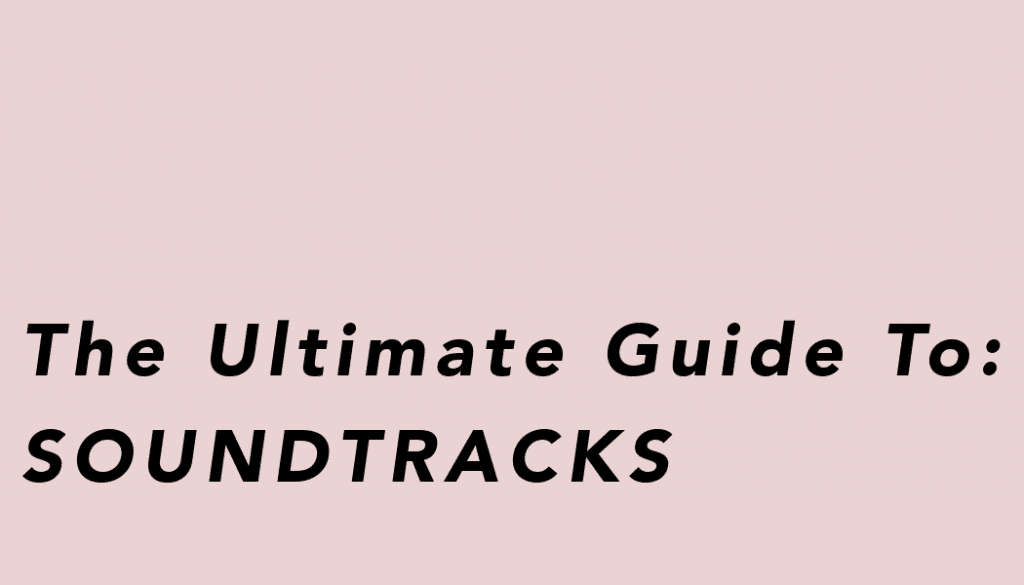A soundtrack has been composed for the colouration of a film or a TV show. Soundtracks or original scores have been evolving into their own art form since the 1950s.
A soundtrack offers different usages for the music. One form is the “On-Music” or “Source Music”. It is part of the movies’ reality and the persona in the movie notices it. “Off-Music” or “Score-Music” is not part of the movie’s reality. The movie character cannot hear it and it is only noticed by the viewer.
A soundtrack is accompanying the prevailing mood of the movie by creating a certain atmosphere. A movie scene can be interpreted differently according to its underlying music. The viewer receives a certain connotation of the scene. Film music can also interplay with the scene on the screen. Therefore, it is an imminent part of the dramaturgical conception of the movie.
A History of Soundtracks
Before the invention of the sound film, there were only silent movies. A pianist was present in order to colour the scenes live on the piano. Often, well-known pieces would be played alongside familiar scenes. For example, the wedding march by Mendelssohn Bartholdy was played for wedding scenes. That was a quite straightforward approach to engage the audience.
Also available at movie theatres where so-called “cinema organs” are. They had many acoustic colours and timbres. Cinema organs also had effect panels which could imitate the sound of wind or the patter of horses. Early Phonographs were also used or Orchestrions. In the early years of the 20. century, it became more and more popular to let whole orchestras play alongside silent movies.
Between 1930 and 1940 the sound movie was established. This led to the creation of soundtracks. The first long sound movie was “The Jazzsinger”. The soundtracks before WW2 were heavily influenced by the symphonic sound of classical music. Whereas the soundtrack past WW2 became more and more influenced by popular Jazz music.
In this time, the recognition value of a soundtrack became more and more important and this trend is consistent till this day.
Soundtrack Production
Normally, the whole movie gets shot, cut and finished before the score composer gets the material. Sometimes, the director and composer get together at an earlier stage to discuss a musical theme or a particular musical movement.
At the cut, a so-called temp track is being laid underneath the movie as a replacement.
The scenes that need a composed musical piece are marked in the cue sheet. Alongside this information, the composer will do his or her job.
Some composers do the whole process of composing and orchestrating the score. Other composers only work on the lead melody and leave the rest to an orchestrator to work out the final score. Is the composing process finished, a movie orchestra will record the music live, synchronously with the movie scenes. The orchestra is led by a normal conductor. This can be a different person than the composer, but sometimes the composer is also leading the orchestra.
In some rare cases, the soundtrack is finished at a very early stage and the movie will be cut according to the soundtrack.
Here is a good example of a composer at work:
Different tools in soundtracks:
The Leitmotiv or guiding theme
Most soundtracks have a guiding theme which is sometimes referred to as “Leitmotiv”. This is a term that comes from classical music and was introduced to it by Richard Wagner. Wagner was an opera composer who first used this technic in order to catch the audiences’ imagination and to order his long operas into sections. Also, he used the Leitmotive by assigning it to specific characters of the opera.
Here is a really nerdy YouTube playlist full of Wagner`s Leitmotives.
A famous usage of the Leitmotiv in soundtracks is John Williams’s work for the Star Wars movies.
Mooding
The technique of mooding means to exhilarate an already expressive scene with a piece of music in order to maximise the effect on the viewer. A very good example is the movie “The Kings Speech”. In a very dramatic situation, the 7th Symphony by Beethoven is used in order to underline the importance of this scene and to give the strongest possible emotion to the viewer.
Different functions of soundtracks:
The syntactic function
This capacity is used in order to give a structural understanding of the movie. Through the music, soft blendings of different scenes can be achieved and a strong distinction can be avoided. The syntactic function also gives the viewer the opportunity to switch between different characters with ease.
The expressive function
Most composers use this function in order to intensify the impression on the viewer and to create deeper emotions within them. Romantic scenes get even more amorous with the right music colouring the scene. The experience of the situation is even more drawn into the movie by the right music.
The dramatical function
With this element, the soundtrack has the assignment to characterise different personalities on screen. It can also express the mood of the character on screen. It is used substitutional for the character when it will be seen on the visual level soon.
Hopefully, this guide will help you, music nerd, to listen to soundtracks differently next time and to make its work more approachable!

